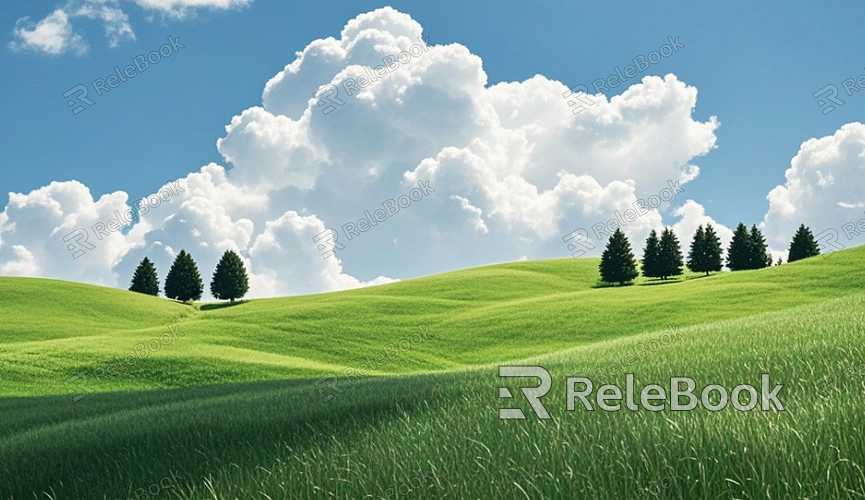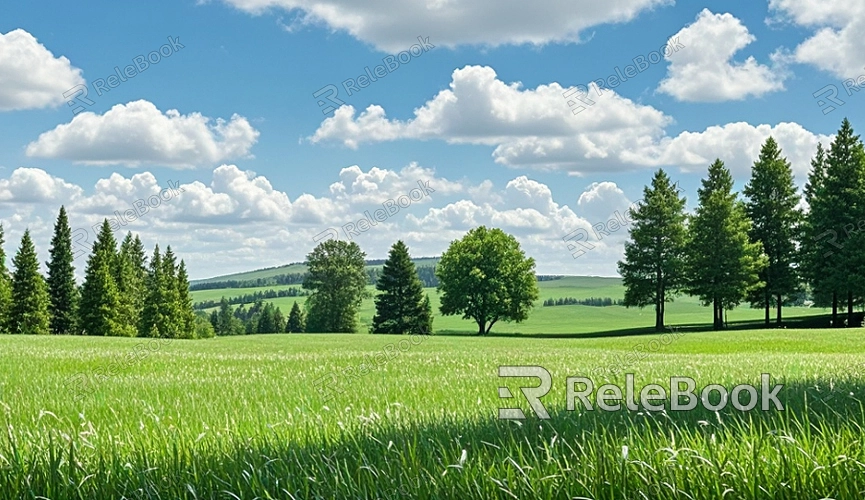How to Create 3D Models of Natural Environments?
Nowadays, 3D modeling has become an essential skill, especially when it comes to reproducing natural environments. Whether in games, films, or virtual reality, accurately modeling natural settings can significantly enhance user immersion and experience.This article will detail how to create 3D models of natural environments, covering everything from basic concepts to practical steps, helping you become an outstanding modeler.

Understanding the Basics of 3D Modeling
Before diving into modeling, it’s crucial to grasp some fundamental concepts. 3D modeling refers to the process of creating three-dimensional objects using computer software. These objects can be displayed and interacted with in virtual environments. 3D modeling of natural environments encompasses various elements, including terrain, vegetation, and water bodies, each of which requires careful crafting to ensure realism.
1. Different Modeling Methods
When modeling natural environments, commonly used techniques include polygon modeling, sculpting, and procedural generation. Polygon modeling is suitable for creating structurally sound objects, while sculpting helps capture intricate surface details. Procedural generation is ideal for large-scale environmental creation, rapidly producing numerous natural elements through algorithms.
2. Choosing Modeling Software
There are various modeling software options available, and selecting the right tool can directly impact the quality and efficiency of your modeling. Blender is a powerful, open-source software that’s great for both beginners and professionals. Maya and 3ds Max are industry-standard tools with extensive features, suitable for complex projects.

Steps to Model Natural Environments
Creating 3D models of natural environments can be divided into several key steps to ensure each part meets your expectations.
1. Collecting Inspiration and Reference Material
Before getting started, gathering inspiration and reference materials is crucial. You can collect data through field trips, photographs, or online resources to obtain various natural scenes. Observing different lighting conditions, weather changes, and color combinations can provide valuable references for your modeling process.
2. Creating Basic Terrain
The next step involves creating the base terrain. Use terrain generation tools to build hills, rivers, and valleys. At this stage, the focus is on the overall shape and structure rather than intricate details. Ensure the terrain flows naturally and reflects actual geographical features.
3. Adding Natural Elements
Once the base terrain is complete, you can start adding natural elements such as trees, rocks, and water bodies. Using the reference materials collected earlier, strategically place these elements to maintain proportion and harmony within the scene. Software vegetation tools can help generate trees and grass quickly, saving time.
4. Refining Models and Texture Application
After adding natural elements, detailing and texture application become particularly important. Use sculpting tools and detail enhancement techniques to add unique features to each element. Applying textures can significantly enhance the realism of the models; select high-quality texture images to make elements like bark, rocks, and water surfaces come alive.
5. Lighting Setup and Rendering
Lighting plays a crucial role in setting the overall atmosphere of the scene. By adjusting the direction, intensity, and color of the lights, you can simulate natural lighting effects. Finally, render the scene to produce high-quality images or animations to showcase your modeling work.
Applications of Natural Environment Modeling
3D modeling of natural environments is not only relevant for games and film production but also has broad applications in various fields that enhance user experience.
1. Game Development
In game development, realistic natural environment models serve as the foundation for creating immersive virtual worlds. Through detailed modeling, players can fully engage with the game’s scenery, enjoying a higher level of interaction.
2. Animation and Film Production
In animation and film production, modeling natural environments is equally crucial. Realistic natural scenes effectively convey emotions and storylines, enhancing the narrative and capturing the audience’s attention.
3. Education and Training
The rise of virtual and augmented reality technologies has broadened the application of natural environment modeling in education and training. By providing highly realistic natural scenes, students can gain immersive learning experiences, deepening their understanding of natural environments.
Creating 3D models of natural environments is a challenging yet rewarding skill that encompasses a range of knowledge and practical applications. Mastering these techniques not only enhances your creative capabilities but also adds realism to your projects. If you’re looking for more high-quality 3D models and texture resources, visit Relebook to download what you need and start your modeling journey!
FAQ
How do I choose the right modeling software for myself?
When selecting software, consider your individual needs and skill level. Blender is a free and excellent choice for beginners, while Maya and 3ds Max are better suited for professional requirements.
How can I improve my modeling efficiency?
Ways to enhance efficiency include using shortcuts and templates and properly planning the modeling process to avoid unnecessary repetitive work.
How important is texture in modeling?
Textures provide detail and color to models, making them appear more realistic. High-quality textures can significantly elevate the visual appeal of your work.
How can I optimize my 3D models?
You can optimize models by reducing polygon counts, effectively using Level of Detail (LOD) techniques, and compressing texture files to improve performance.

